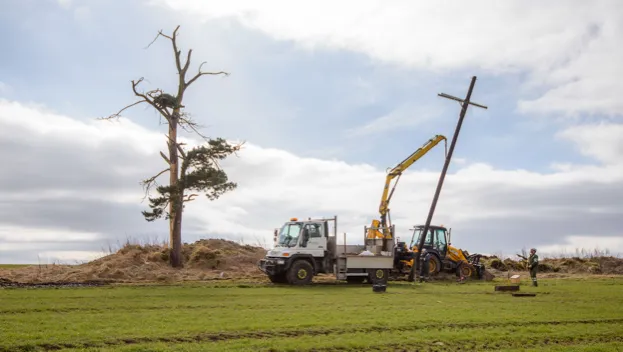Conservationists from the Lothian & Borders Raptor Study Group and the Tweed Valley Osprey Project were worried about the future of an osprey nest near Kelso, when the pine tree it was in started showing signs of dangerous decay.
They asked local electricity firm - SP Energy Networks - if there were any spare telegraph poles that could be bought, and placed next to the current osprey nest. However SP Energy Networks offered to donate a pole and install it.
“This osprey breeding ground is one of only three remaining in the Eastern Borders region, so it is extremely important to preserve this site to ensure the birds stay local and continue to breed,” says Malcolm Henderson, osprey co-ordinator of the Lothian & Borders Raptor Study Group.
“The pine tree was getting to the point where it was unsafe not only for the birds and their nest, but also for our team members to climb to check on them as part of our ongoing monitoring programme.”

Once the platform is complete, the dangerous tree will be cut done and the conservationists hope the ospreys, which are due to return to the UK imminently, will take to the artifical nest and continue to raise chicks.
There are 12 breeding pairs of ospreys being monitored by the group in the Scottish Borders, and less than 300 breeding pairs in the UK.
Due to historic persecution, the osprey went extinct as a breeding bird in England from 1840 and in Scotland from 1916.
However in the 1950s, the species recolonised naturally in Scotland, and then in 2001 recolonising birds and re-introduced birds bred in England in the Lake District and at Rutland Water respectively.
Main image: The osprey pair. © Tweed Osprey Project

